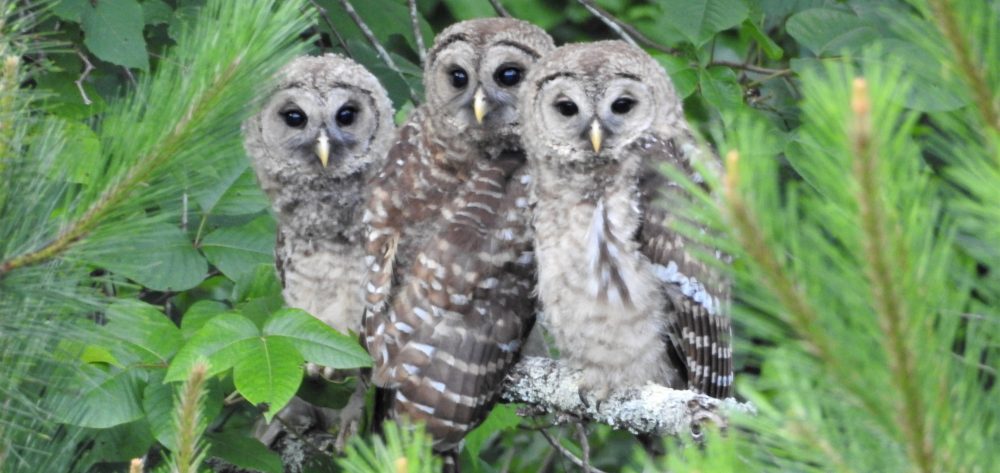As Atlanta wakes to its first winter storm and I watch my backyard birds gathering at the feeder, I find myself reflecting on the ways that wildlife survives winter’s cold, harsh weather. Although I grew up in New Jersey and spent four years in college in Vermont (where winter temperatures often stayed in the single digits for several days straight), I’m now more acclimated to Georgia’s climate and inclined to put on a sweater when the temperature drops below 70 degrees. Some birds, however, feel right at home in the cold. In fact, roughly 200 species flock to arctic regions to breed and raise their young in the land of the midnight sun. Last July, a family trip to Iceland gave me a chance to witness some of these birds nesting and raising young in one of the coldest, harshest biomes on the planet, where even a summer day can feel wintery to a girl accustomed to Georgia’s climate. Average daily temperatures during our visit were in the 40s fahrenheit (colder with windchill), and we saw more clouds and drizzle than sunshine. Regardless of the weather, Iceland was one of the most amazing places I have ever visited. Our week-long adventure circling the country on the 830-mile Ring Road took us by vast lava fields, active volcanoes, massive glaciers, roaring waterfalls, and snow-capped mountains towering above slaty seas.
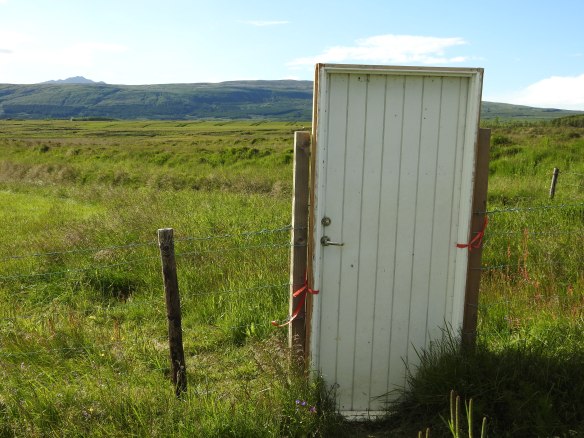
Welcome to Iceland!
The second largest North Atlantic Island (39,769 square miles), just south of the Arctic Circle, Iceland is one of the most volcanically active places on the planet, and glaciers cover 11 percent of the country. Frozen rocky subsoil combined with gusting winds prevent trees from taking root, and most of the interior of the country is tundra, a treeless polar dessert that supports only scattered low plant life like lichens, mosses, and sedges. In fact, the landscape is so barren and uninhabitable that the first American lunar astronauts were sent there for pre-mission training. Somehow, however, the birds carve out a living here, even in the most remote places on the island.
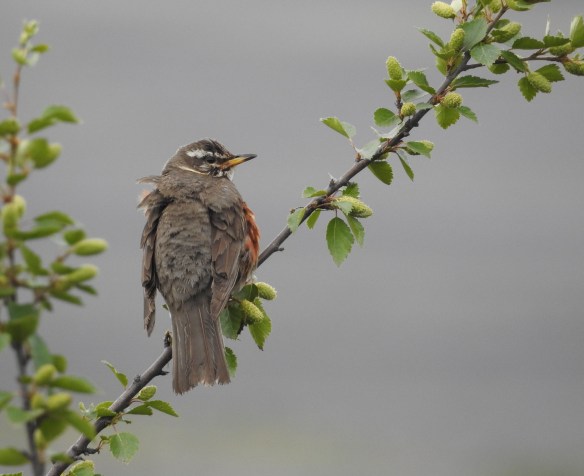
The first bird we saw when leaving the airport was the Redwing , which we dubbed the Icelandic Robin. We saw them all over the island.
One of the most common birds we encountered was the White Wagtail, easily recognized by its distinctive black and white plumage and characteristic habit of constantly bobbing its tail. Often seen running about in parking lots, parks, and other open areas in pursuit of insects, this is one of the most common birds of open terrain in Europe and Asia. The first wagtail we saw, true to form, was running in the gravel parking lot of our hostel catching moths. Like most birds in Iceland, for whom nesting in trees simply isn’t an option, wagtails nest in low crevices among rocks or cliffs and will readily nest in the niche of a building. Foraging on the ground and sometimes in shallow water, they eat mostly insects, as well as other small invertebrates. Watching an adult trying to satisfy the appetites of three hungry fledglings was a memorable birding moment of the trip. Iceland’s White Wagtails find the winters a bit too cold, however, and migrate to Western Africa in winter.
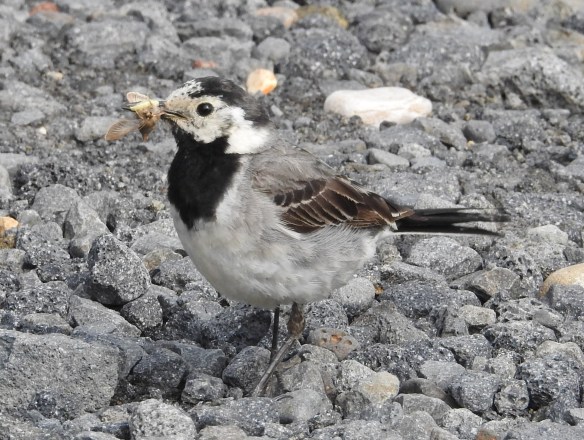
This White Wagtail seemed to be finding food just fine in a gravel parking lot.
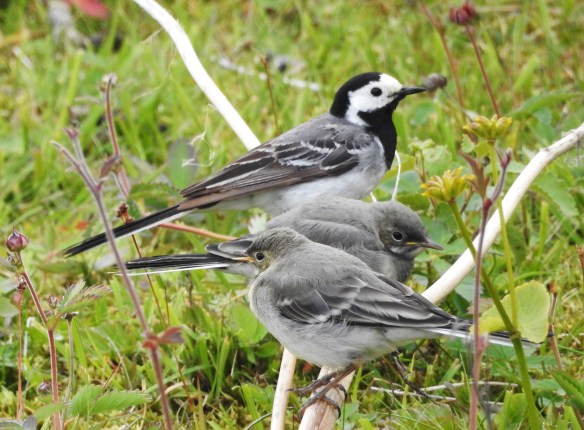
No rest for a parent with hungry babies!
The Artic Tern is, perhaps, the ultimate snowbird, spending summers in the arctic raising their young then migrating to Antarctica during the arctic winter. No other animal has a longer migration than the Arctic Tern, which makes a 22,000+ mile round trip journey between poles each year, spending the majority of its lifetime in the air. In Iceland, these birds are sometimes considered a nuisance, as they can be aggressive to humans coming near their nests. We saw them all over the country, inside national parks and alongside highway rest stops, and I can attest that they will dive-bomb you if you wander too close to a nesting area. (I crouched near a utility pole at a gas station to get my shot of a fluffy baby tern, which may be the cutest bird I’ve ever seen.) You can’t blame the terns for this defensive behavior when Glaucous Gulls and Parasitic Jaegers, both readily seen in coastal areas, pose a constant threat to their eggs and young. It’s remarkable to me that, in spite of their incredible pole to pole journeys, most Arctic Terns return to the area where they were hatched, often to the same colony.
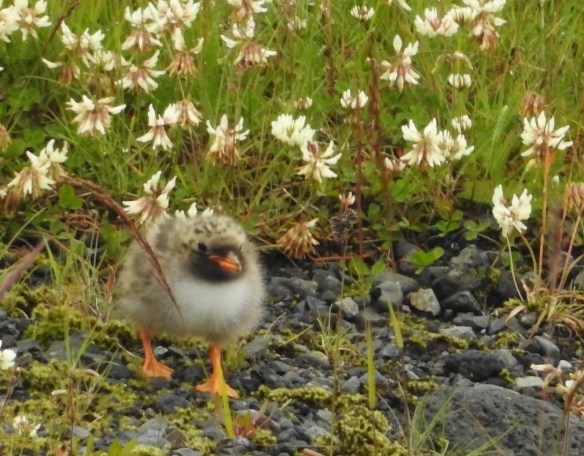
Dive-bombing adult terns keep predators (and photographers) from getting too close.

Oh the cuteness!
Although they are common along the coastline in Iceland, especially in the summer, Common Eiders were the bird sighting that most surprised me when we first spotted them. We had just stopped for some hiking and birding at Jokulsarlon, a glacial lagoon that is one of the most spectacular, but barren landscapes I’ve ever seen. As luck would have it, the winds began to kick up and a cold drizzle started to fall as we set out. Undeterred, we were rewarded with two life birds almost immediately along the banks of the lagoon, Snow Buntings and Barnacle Geese, but after just 10 or 15 minutes of walking in the cold wind on exposed rock, we were ready to head back to the car. Every other sign of life had disappeared, hunkering down under what little cover could be found. Then we spotted some movement on the water. A couple of families of Common Eiders were diving and swimming among the icebergs, feeding on mussels and other hard-shelled crustaceans along the shoreline as if it were a lovely summer day, which I suppose to them, it was. Eiders, as you probably know, are the source of eider down, which is gathered by trained harvesters without harming or disturbing the birds. Those feathers have got to be warm to allow this bird to spend so much time in such icy waters! These hardy ducks winter largely in their breeding range, with only the most northerly populations wandering south.
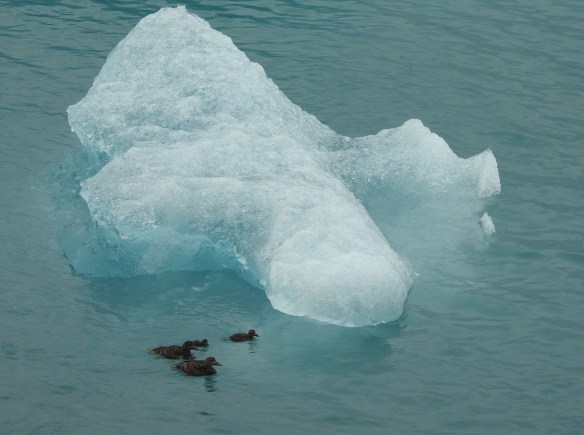
Eiders on ice
No summer trip to Iceland would be complete without seeing Atlantic Puffins. I planned a full day of our itinerary to enjoy these charismatic little birds. You can imagine my disappointment, then, when we arrived at the ferry terminal for our puffin excursion to learn that rough seas had cancelled the trip for the day. Although most of the world’s puffins are found in Iceland, where 60 percent of the population breeds, there are limited places to view them, and the only other colony in striking distance would take us 100 miles out of our way, much of it on a dirt road, on a day that we already had to drive 180 miles on winding mountainous roads to get to our next stop. Do you think we skipped the puffins? Of course not. When we arrived at the puffin colony in the Eastfjords, the wind was gusting and a cold mist was falling (surprise, surprise!), making the temperature seem much colder than the actual temperature of 45 degrees, but as soon as we climbed a few dozen stairs, we were looking out across a large colony of puffins standing guard at their burrows like soldiers and flying back and forth from their burrows out to sea to catch fish for their young. We were amused to watch a pair just 25 or 30 feet from us scuffling on the side of a cliff until one was knocked over the side and out of view. These amazing birds can dive for up to a minute and to depths of up to 200 feet, and the average catch is about 10 fish per trip. You have to give them credit for nesting in such harsh, remote places then spending the winter out at sea in the North Atlantic. I could have stayed and watched them for hours, but we had a long drive ahead and had to limit our time. In spite of the cold and wind, my husband and two teenaged children also counted the visit as one of the highlights of the trip, which made it that much sweeter for me.
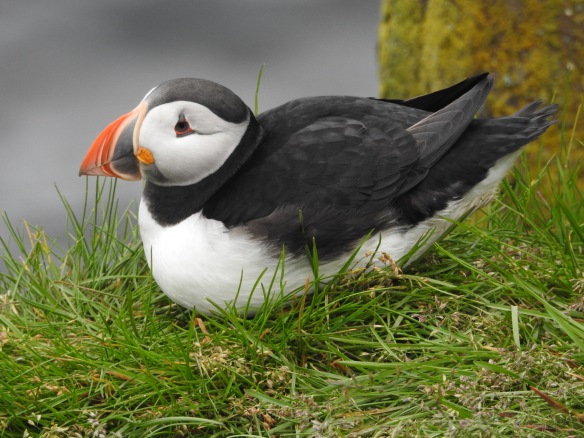
Silly and elegant at the same time!
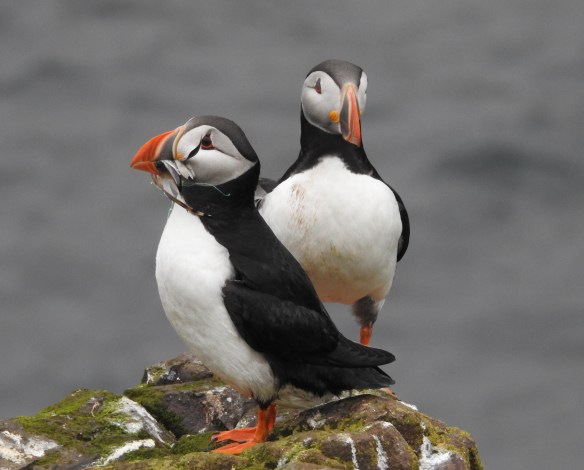
Puffin with feathers to line its nest
As we were leaving the puffin colony, my husband spotted a low bird flush from a rock along the side of the road—a Gyrfalcon. The largest falcon in the world, this year-round Icelandic resident nests on rocky cliffs in the open tundra where they frequently begin breeding and laying eggs while the temperature is still below zero degrees Fahrenheit. They also use these rocky ledges to scan for their primary prey, the Rock Ptarmigan (another year-round resident that eluded us). Fast and well-camouflaged against the cliffs, we had only a fleeting glimpse before it disappeared among the rocks.
During the course of the week, I added 36 life birds to my list, each one made memorable by the dramatic, beautiful, and harsh landscape around us. At one remote pull-off on our route, surrounded by black, basaltic rocks as far as the eye could see with only the sparsest covering of vegetation, I was astounded to hear a bird calling—a Common Ringed Plover. The birds that raise their young on the tundra have some incredible adaptations that allow them to live on a precarious edge in an often punishing environment. If you’ve never considered Iceland as a birding destination, add it to your bucket list. Just don’t forget your down coat!
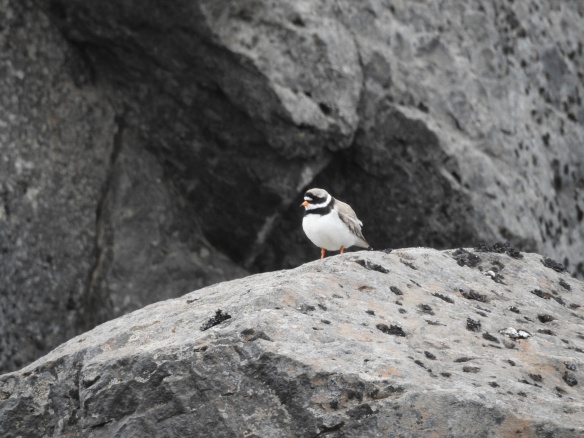
Common Ringed Plover among the lava fields










